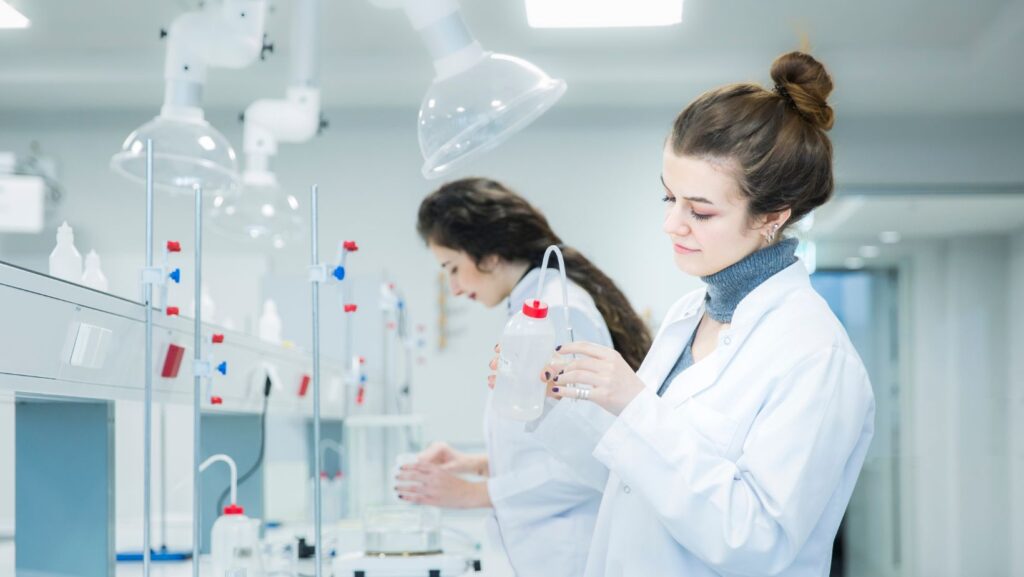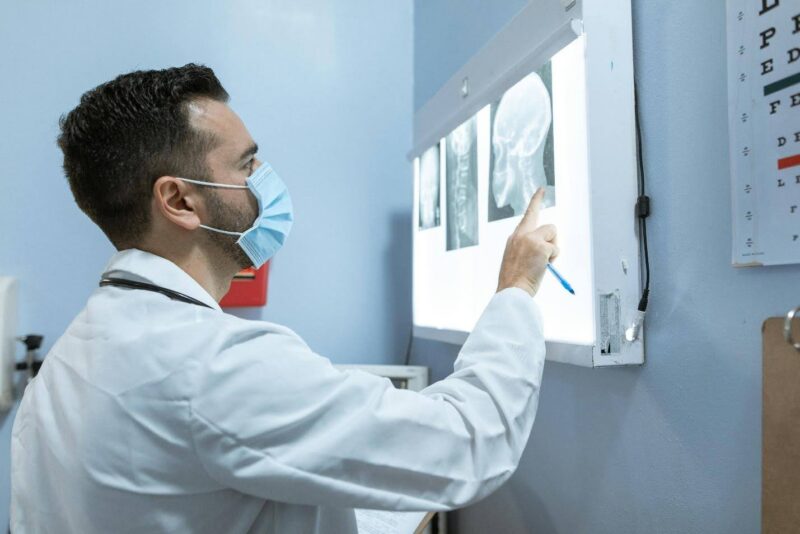
Want to know how joining data is helping cancer research?
When different types of health information come together, it gives a clearer view of cancer. This helps find answers faster and can lead to better care. Mixing data from records, tests, and studies helps scientists learn more quickly.
This means new ideas and treatments can happen sooner. Learning how data joining works can help you see how cancer research is getting better. Ready to find out how this change can help patients? Keep reading to learn more about this important progress.
Bringing Together Patient Records from Different Places
Doctors need to see all of a patient’s health records to understand their full story. These records can come from different hospitals, clinics, or doctors. If the records are kept in one place, it’s easier to know what care the patient received before.
This helps avoid doing the same tests again and saves time. It also helps doctors plan the next steps more clearly. Having all records in one spot makes it easier to track changes in health.
This shared data can also help with research. It is very useful when studying PDX models, which are used to learn how cancer grows and how it might react to treatment.
Connecting Lab Test Results with Health Data
Lab tests give important clues about what is happening inside the body. By linking test results with other health data, doctors can understand the full story more clearly. This helps them see how the body is working and find any problems early.
It also makes it easier to check if treatments are helping or need to change. Having all this information in one place saves time and helps care teams work better together. Knowing that all your test results are connected with your health record can help you feel safe and well cared for.
Finding Patterns in Different Cancer Types
Cancer is not the same for everyone. Some types grow fast, while others grow slowly. By looking at many cases, doctors can find patterns in how each kind of cancer acts. These patterns can show how a cancer might change, spread, or react to care.
Learning these details helps doctors make better choices and gives patients clearer answers. This kind of study also shows which treatments may work best for each type.
Knowing that experts are studying these patterns helps you feel more sure about the care you receive. It can also help you feel confident that each step is based on real knowledge and careful study.
Making Cancer Diagnosis More Accurate
Doctors use many tools to find out if someone has cancer. These tools include scans, lab tests, and reports. By using more than one method, doctors can be more sure about the results. This helps them know the exact type and stage of cancer.
A correct diagnosis is very important because it guides the next steps in care. It also helps avoid wrong treatments that may not work. Better tools and new ways of checking results help doctors catch cancer early and clearly.
This means patients can get the right care sooner. It also helps rule out other problems, so people don’t worry about the wrong things. Clear answers can also help explain other health issues that may be linked.
Detecting Cancer Changes Faster with Live Data
Cancer can change quickly, so doctors need ways to see those changes right away. Live data helps by showing updates in real time. This means doctors do not have to wait days or weeks to see how a patient is doing.
They can check changes in the body as they happen. With this fast information, they can adjust care without delay. It also helps spot problems early before they get worse. Using live data gives a clearer view of how things are going.
It allows care teams to act fast and make smart choices. This kind of quick action can lead to better outcomes and fewer delays, which is very important for people going through cancer treatment.
Finding New Signs of Cancer in Data
Cancer can show itself in many ways, and not all signs are easy to see. By studying large sets of health data, experts can find new signs that were missed before. These signs may be small changes in the body or patterns that only show up in certain people.
Finding these early clues helps doctors understand more about how cancer starts and grows. It also gives them new ways to check for cancer before it spreads.
These discoveries can lead to better tools for testing and early care. The more data that is studied, the more hidden signs can be found. This helps improve what doctors know and how they find cancer earlier and more clearly.
Studying Genes to Learn Why Cancer Happens
Each person’s body has genes that give instructions to cells. Sometimes, these instructions change, and those changes can lead to cancer. By studying genes, experts can learn more about how and why cancer starts.
They look for changes that may cause cells to grow too fast or not work the right way. Some gene changes are passed down from family, while others happen later in life.
Learning about these changes helps doctors understand what causes certain cancers to form. This knowledge can lead to better ways to watch for early signs or understand which cancers might grow faster.
By looking closely at genes, researchers can find answers that help improve care and increase what is known about how cancer begins.
Making Treatment Plans Just for You
Every person is different, and so is every case of cancer. A treatment that helps one person may not work the same for someone else. That’s why doctors look closely at each person’s health, cancer type, and how their body responds.
This helps them create a plan that fits the person’s needs. The plan may include one or more treatments, like medicine, surgery, or other care. It can also change over time based on how things are going.
By focusing on the person, not just the cancer, care becomes more exact and more helpful. This kind of plan gives the best chance for a strong and steady path forward, made just for that person’s body and situation.
Watching How Patients Respond to Treatment
Cancer treatments do not always work the same way for every person. Some people may feel better quickly, while others may need more time or a different plan.
By watching how a patient responds, doctors can see if the treatment is helping or needs to be changed. This may include checking for side effects, measuring progress, or looking at how the body is reacting.
Close watching helps make sure the treatment stays on the right path. It also gives doctors a chance to adjust care as needed. Paying attention to these changes helps provide better support and care. This careful tracking is an important part of helping each person move forward in the best way possible.
Cutting Mistakes by Using the Same Data Everywhere
Using the same data everywhere helps avoid mistakes in cancer care. When doctors, nurses, and labs all see the same information, it reduces confusion. This means fewer errors, like giving the wrong medicine or repeating tests.
It also helps make sure every part of the care team is on the same page. Consistent data keeps care smooth and safe. It saves time and helps patients get the right treatment faster.
Sharing accurate information helps avoid misunderstandings and keeps the focus on the patient’s needs. This way, everyone involved in care can trust the information they have. Using the same data well helps create a safer and more effective care experience for patients facing cancer.
Helping Clinical Trials Move Faster
Clinical trials test new ways to treat cancer. They need many patients and lots of data to find out if a treatment works. Faster trials mean new medicines and care can reach patients sooner. By using clear and organized data, trials can run more smoothly.
This helps researchers avoid delays and make better decisions. Sharing data carefully also helps find the right patients for each study. When trials move faster, it saves time and money while improving care options.
Patients get access to new treatments sooner, which can make a big difference. Better trial speed helps the whole process of fighting cancer, giving hope for better answers and care in less time.
Making It Easy for Doctors and Researchers to Work Together
Doctors and researchers need to share information easily to work well together. When they can talk and see the same data, they learn more about cancer faster. This helps them find new treatments and make better care plans.
Tools that let teams share ideas quickly make work smoother. It also helps stop mistakes and confusion. When everyone works as one team, progress happens faster, and patients get better care.
Sharing clear information is very important to fight cancer better. Helping doctors and researchers work together in simple ways leads to quicker discoveries and better results for people with cancer.
Guessing Cancer Risk Using Health and Life Data
Doctors use health and life data to guess who might get cancer. This data includes things like age, diet, and habits, such as smoking. It also looks at family history and other health conditions.
By studying this information, doctors can see who has a higher chance of getting cancer. This helps them watch those people more closely and suggest ways to lower risk. Knowing these chances early can help people make better choices about their health.
It also allows doctors to provide advice on tests and check-ups that might help catch cancer early. Using health and life data this way gives people a better chance to protect themselves and live healthier lives.
Better Care by Sharing Patient Information
Sharing patient information helps doctors give better care. When all the people helping with care see the same health details, they know what has happened and what to do next. This stops mistakes and makes sure treatments are right for the patient.
It also helps avoid doing the same tests twice. When information is shared clearly, care teams can work faster and better. This makes patients feel cared for and understood.
Sharing health information also helps check if treatment is working and lets doctors make changes if needed. Clear sharing between doctors and nurses helps patients get the best care and makes the whole process easier for everyone.
Helping Create New Cancer Medicines
New cancer medicines come from careful study and testing. Researchers use data to learn how cancer works and how to stop it. This helps them create drugs that can target cancer cells without hurting healthy cells.
The process takes time, but better information makes it faster and safer. Sharing data from many sources helps scientists find the best options to test. When researchers work with clear and accurate data, they can design stronger medicines.
These new medicines offer hope for patients who need better treatments. Using this knowledge helps bring new cancer drugs from the lab to the people who need them most, improving care and giving more chances to fight cancer.
Tracking Cancer Growth Over Time
Tracking cancer growth over time helps doctors understand how the disease is changing. By looking at regular scans and tests, doctors can see if cancer is growing, staying the same, or shrinking.
This information is important to know if treatments are working or if new steps are needed. Watching cancer over time allows doctors to make smarter care decisions. It also helps them spot any signs that cancer might be spreading or returning.
Regular check-ups give a clearer view of how the patient is doing and help plan the next move. Keeping track this way helps make sure patients get the right care at the right time. Care teams use this ongoing information to adjust treatments and provide the best support possible throughout the patient’s cancer journey.
Transforming Cancer Research with Data Integration
Data integration is changing cancer research by bringing important information together in one place. This helps doctors and researchers find new insights faster and improve how cancer is diagnosed and treated.
With better data sharing, personalized care becomes easier, leading to better patient outcomes. As technology grows, data integration will continue to play a key role in fighting cancer and helping patients receive the best care possible.
Did you find this article helpful? You can check out our website for more awesome content like this.








